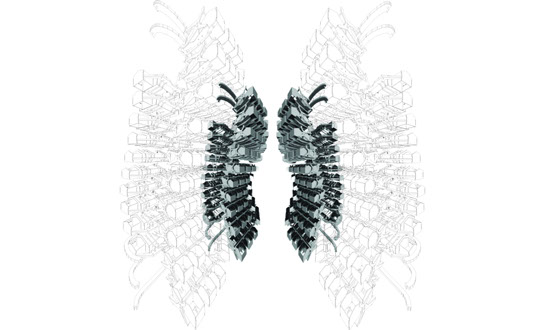Artwork: Parochial Mass
Artist: James Enos
Parochial Mass is a conceptual exploration of a few primary questions / modest speculations concerning the future of form and material representations as they taxi to account for “irrational desires” constrained within a physical vacuum. Where such emerging and fully automatic mediations of space and use are forced to still reconcile selfhood and identity; beyond the material usage of mechanized labor alone . . .
If we can imagine the continual upkeep of corporate duplicity in the present -- a rhythm where we are held hostage and implicated in and of ourselves, then the immediacy of topics embedded within pending lunar conquest e.g. emerging techno-transnational resource hegemony and a sort of future-primitive accumulation, perhaps, might simply follow suit. Outer space and the inner-self then become reciprocal projections for each other, or more likely they sustain as they always have, while perpetuating familiar spatial practices asserting fewer alternatives than continued service to ceremonial powers.
Thinking loosely, and limited by my own conjectural analysis of Western European /Anglo American historical understanding of entitlement, selfhood, and property – “Parochial Mass” becomes the assertion of ordinary building styles, typologies, sizes and uses as they are currently expressed, militarized, zoned and planned. Processes where branded environments, consumer feedback systems, and the ultimate lifestyle can expertly become managed into material affects and apt visualization strategies. It is a strange space, where fiction can
redirect fact at will and visa versa.
Using “Clairemont Erasure” (Enos, UCSD 2009) as an antecedent, wherein the case of a prototypical Southern California 1950’s housing tract is reframed in terms of contemporary density issues i.e. energy, material, and connectivity per unit . . . and is then offered back as a mixed-use, high-density, and low-impact mega structure challenging consumers to push past skyscraper vs. landscaper thinking (as sole housing strategies). In the “Parochial Mass” a further question is raised along these lines. The exhibited visualization implies a modest
change in the model, where once industrial-housing units expressed standard familial units, they now personify collections of capital beyond the nation state working at the behest of market demand.
Situated within the vastness of a bleak lunar outlook, an immense clustering of foil sacks containing forms of shelter, dwelling, and traditional property are bound together by a modular structural rib system, where life support services, and a never-ending collection of Mylar satchels operate as pressurized building types. These units, although connected by a conduit / central feeding system, enjoy the ever expanse of physical space in the face of limited habitability, prompting us to consider values expressed through forms of subsistence community over intention and tolerant participation, but even more importantly alluding to a less than utopian version of transnational society. Wherein the physical geography of earth has yielded emergent technologies, industrial processes, and biological territories via feedback / aggregation --- conceivably, a mining race to parcelize llunar geography would become an approximation in human geography traditions alone. In this case, the scale, make-up, and articulation of the neighborhood might be seen as slime mold where moisture, warmth, and food are replaced by corporate raider ships knotting primitive capital in an exercise of industrial productivity for maximum export.
In consequence, the idea of this “Parochial Mass” becomes all the more poignant. Just as all cold war influenced mobilizations embody projections of identity, political will, and claims of social power expressed by means of militarized governance; our future spatial conquests in pursuit of resource hegemony provoke one fairly simple question: Who is fueling the rockets?

Website: www.ens-projects.com
